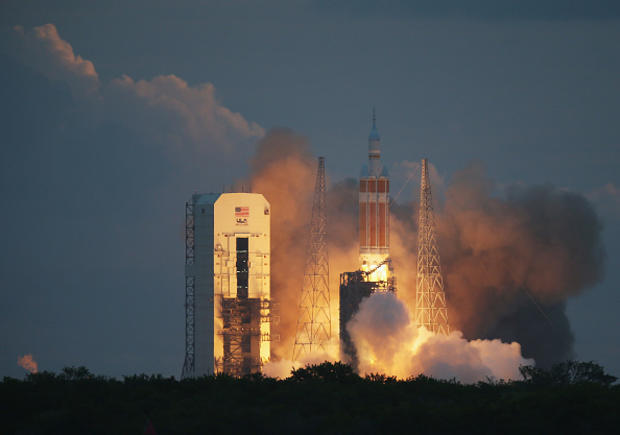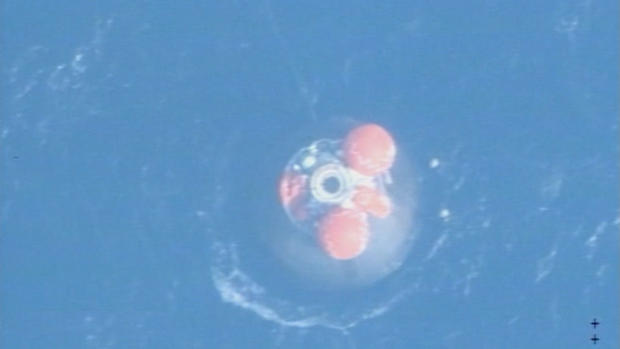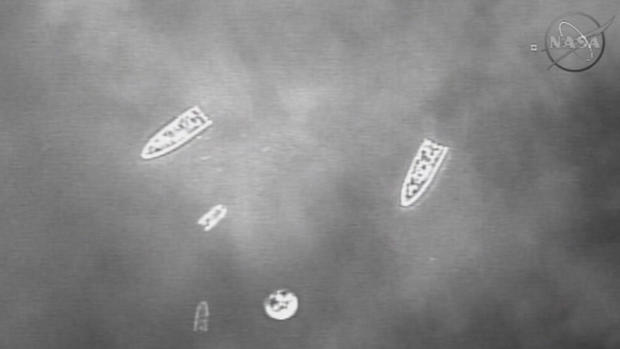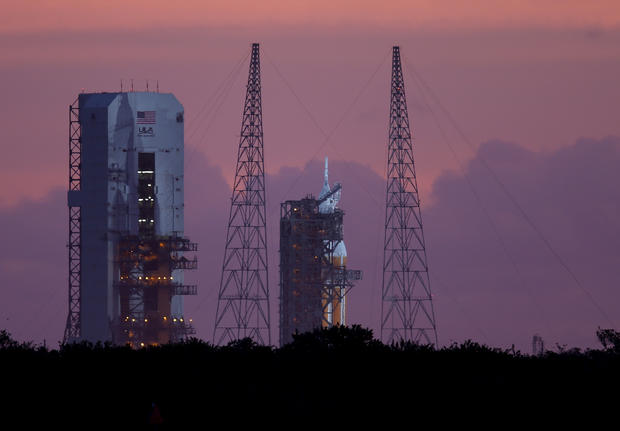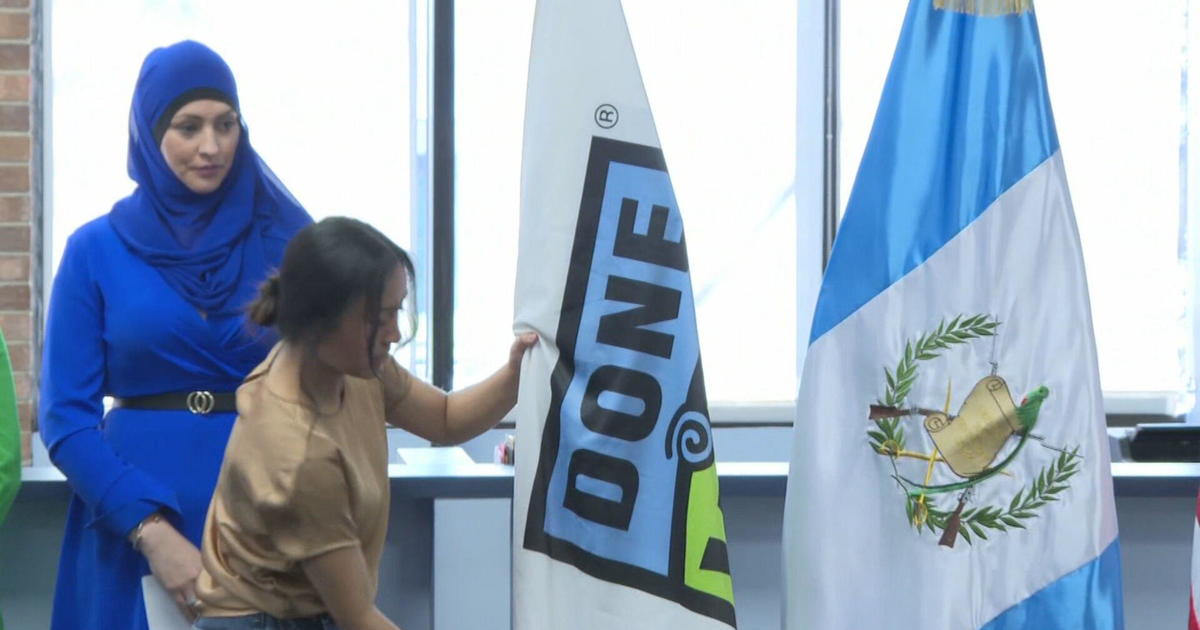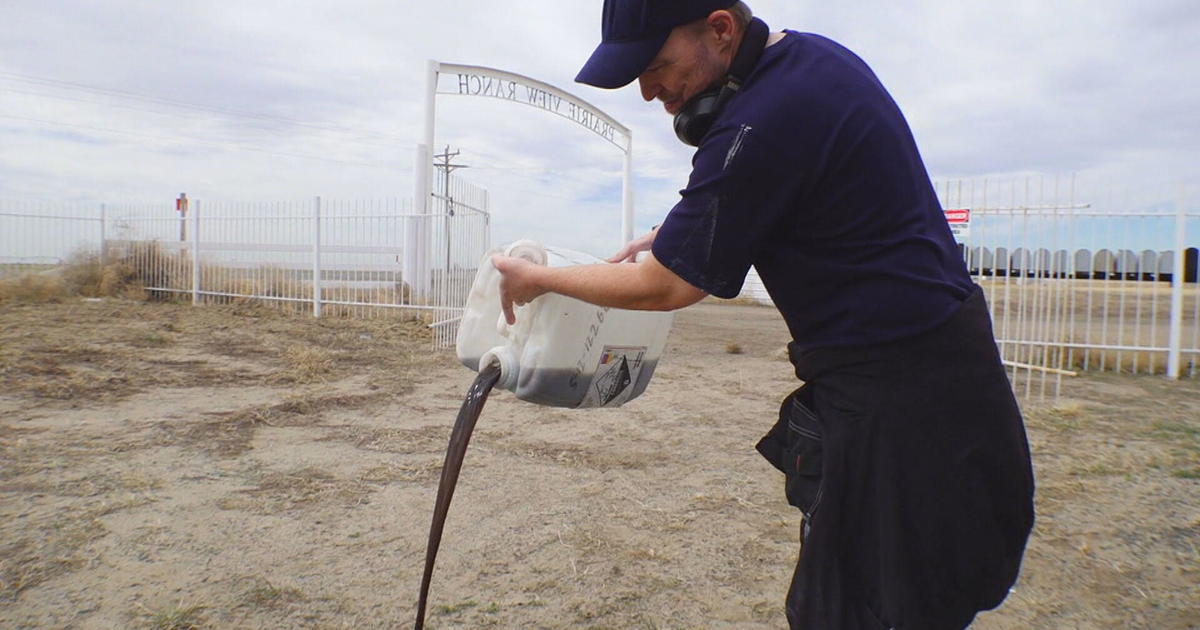NASA: 'There's Your New Spacecraft, America!'
CAPE CANAVERAL, Fla. (AP) — NASA's new Colorado-built Orion spacecraft made a "bull's-eye" Pacific splashdown Friday following a dramatic flight 3,604 miles beyond Earth, opening a new era of human exploration meant to put people on Mars.
The unmanned test flight ended 4½ hours after it began and achieved at least one record: flying farther and faster than any capsule built for humans since the Apollo moon program.
"There's your new spacecraft, America," Mission Control commentator Rob Navias said as the Orion capsule neared the water 270 miles off Mexico's Baja peninsula.
NASA is counting on future Orions to carry astronauts beyond Earth's orbit in the decades ahead, to asteroids and ultimately the grand prize: Mars.
The lead flight director, Mike Sarafin, was emotional as he signed off from Houston.
"We challenged our best and brightest to continue to lead in space," Sarafin said. "While this was an unmanned mission, we were all on board Orion."
The agency quickly reported positive results: Not only did the capsule arrive intact, all the parachutes deployed and onboard computers withstood the intense radiation of the Van Allen belts surrounding Earth.
The capsule reached a peak altitude more than 14 times farther from our planet than the International Space Station. No spacecraft designed for astronauts had gone so far since Apollo 17 — NASA's final moon shot — 42 years ago.
NASA needed to send Orion that high in order to set the crew module up for a 20,000-mph, 4,000-degree entry. That was considered the most critical part of the entire flight — testing the largest of its kind heat shield for survival before humans climb aboard.
PHOTO GALLERY: Colorado-Built Orion Spacecraft Launches
In 11 minutes, Orion slowed from 20,000 mph to 20 mph at splashdown, its final descent aided by eight parachutes deployed in sequence. A crew on board would have endured as much as 8.2 Gs, or 8.2 times the force of Earth gravity, double the Gs of a returning Russian Soyuz capsule, according to NASA.
Earth shrank from view through Orion's capsule window during its trip out to space, and stunning images were relayed back home. Its return was recorded by an unmanned drone flying over the recovery zone, providing more spectacular views. Helicopters then relayed images of the crew module bobbing in the water. Three of the five air bags deployed properly, enough to keep the capsule floating upright.
The U.S. Navy pulled up in a pair of ships to recover the spacecraft and transport it to San Diego, 630 miles away. Orion ended up just 1½ miles from the predicted splashdown spot. Only two of the parachutes could be recovered.
Once ashore, Orion will be transported by truck back to Cape Canaveral, just in time for Christmas.
It's supposed to soar again in 2017 in a launch abort test, followed by a second Orion heading to space in 2018 aboard the megarocket under development by NASA. Officials expect it will be at least seven years from now — 2021 — before Orion carries people, given present budget constraints.
Orion's debut was intended to be brief — just two laps around Earth, shorter than even John Glenn's orbital achievement in 1962.
NASA is now "one step closer" to putting humans aboard Orion, said NASA Administrator Charles Bolden Jr. He called it "Day One of the Mars era."
Earlier Friday, everything went NASA's way as the powerful Delta IV rocket lifted Orion into orbit.
The atmosphere was reminiscent of the shuttle-flying days, but considerably more upbeat than that last mission in 2011.
Astronaut Rex Walheim was aboard the final shuttle flight and joined dozens of space fliers on hand for this historic send-off. He talked up Orion's future in sending crews to Mars and the importance of becoming what he called "a multi-planetary species."
"You have that excitement back here at the Kennedy Space Center and it's tinged with even more excitement with what's coming down the road," Walheim said.
His enthusiasm was shared by Chris Tarkenton, who traveled from Poquoson, Virginia, to watch from the nearby causeway.
"It's been a while since we've been able to launch something of this magnitude," Tarkenton said. "Awe inspiring."
From the space station, all six astronauts watched the events unfold via a live TV feed.
In Houston, NASA's Mission Control led the entire operation once Orion was aloft. The flight program was loaded into Orion's computers well in advance, allowing the spacecraft to fly essentially on autopilot. Flight controllers — all shuttle veterans — could have intervened if necessary.
The spacecraft was rigged with 1,200 sensors to gauge everything from heat to vibration to radiation. At 11 feet tall with a 16.5-foot base, Orion is bigger than the old-time Apollo capsules and, obviously, more advanced.
NASA deliberately kept astronauts off this first Orion.
Managers wanted to test the riskiest parts of the spacecraft — the heat shield, parachutes, various jettisoning components — before committing to a crew.
This Orion — serial number 001 — lacked seats, cockpit displays and life-support equipment, but brought along bundles of toys and memorabilia: bits of moon dust; the crew patch worn by Sally Ride, America's first spacewoman; a Capt. James Kirk doll owned by "Star Trek" actor William Shatner.
Lockheed Martin Corp. already has begun work on a second Orion and plans to build a fleet of the capsules. An asteroid redirected to lunar orbit is intended for the first stop in the 2020s, followed by Mars in the 2030s.
The company handled the $370 million test flight for NASA, opting for the Delta IV, the most powerful unmanned rocket in the U.S. right now. The entire rocket and capsule, topped by a launch abort tower, stretched 242 feet and weighed 1.6 million pounds — an "incredible monster," according to Bolden.
To push Orion farther out on future flights, NASA is developing the Space Launch System or SLS, megarocket. The first Orion-SLS combo will fly around 2018, again without a crew to shake out the rocket, although it will be capable of carrying four astronauts on long hauls and as many as six on three-week hikes.
Bolden, a former astronaut and now NASA's No. 1, called Mars "the ultimate destination of this generation," but said his three young granddaughters think otherwise, telling him, "Don't get hung up on Mars because there are other places to go once we get there."
LINKS: nasa.gov/orion/ | Lockheed Martin
By Marcia Dunn, AP Writer
(© Copyright 2014 The Associated Press. All Rights Reserved. This material may not be published, broadcast, rewritten or redistributed.)
